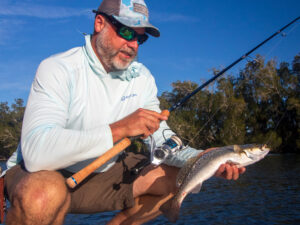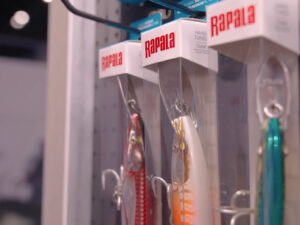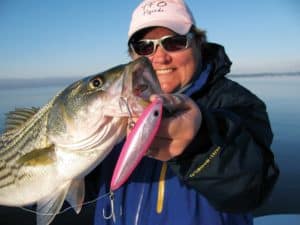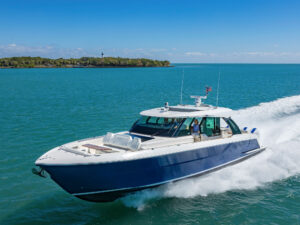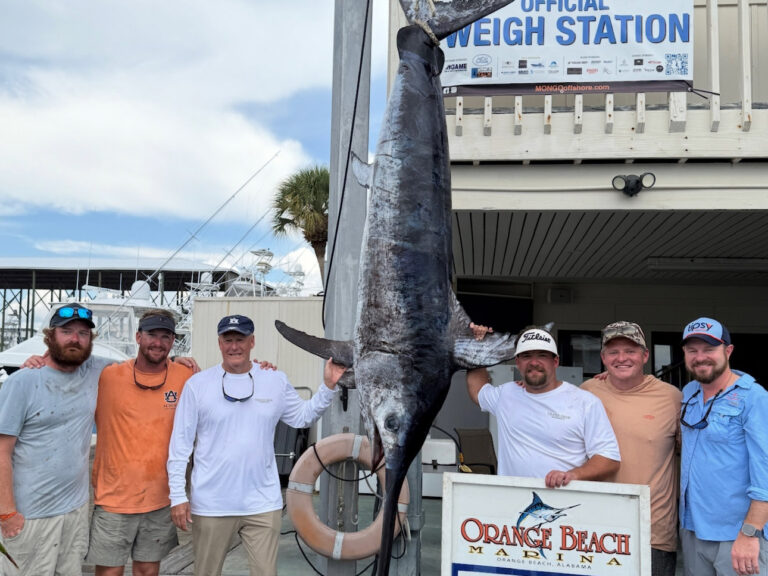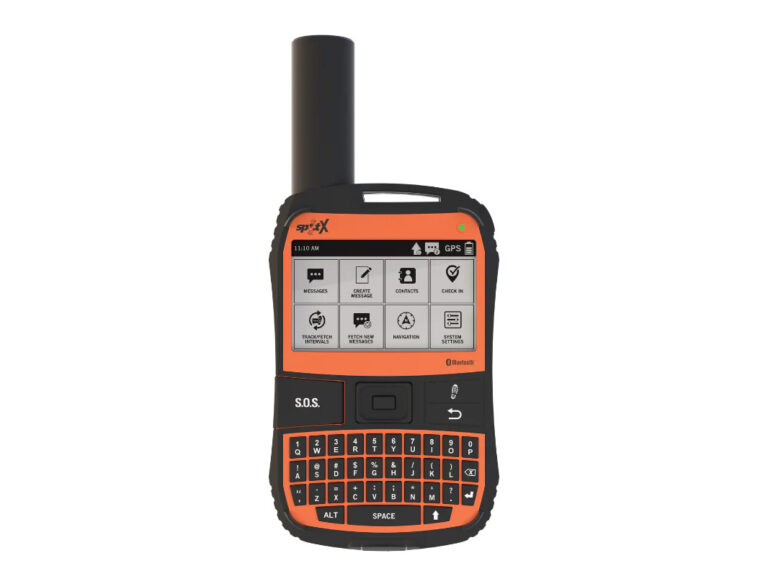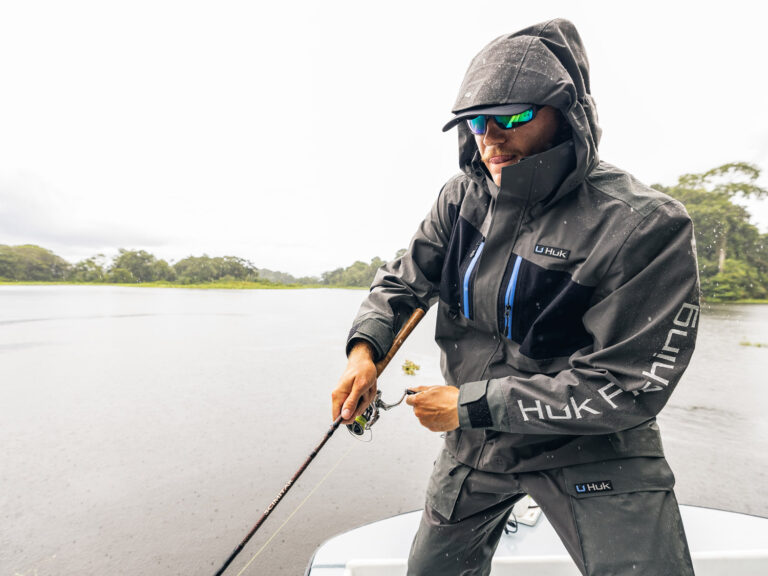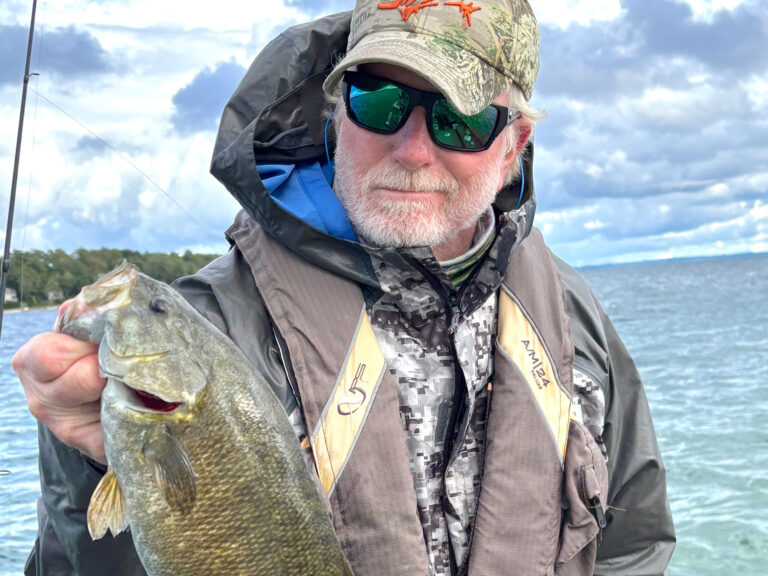
As an old rod-and-reel commercial fisherman used to tell me, “You can’t cook what you can’t hook.” With that in mind, I’d wager that more game fish avoid being hooked and cooked because of bad casts.
That includes casts that come up short, casts that don’t land anywhere near the fish, casts that spook fish, and casts that snag docks, rocks and mangroves.
Matching your tackle with the conditions under which you’re fishing and the species you’re pursuing can make a huge difference in your casting. A light lure on a heavy-duty rod with a tiny reel probably won’t go more than 10 feet beyond the boat.
“With any type of tackle, it’s all about balance,” says pro angler Bernie Schultz. “The rod, the reel, the lure and the line. All of that has to work together for accuracy and distance.”
Schultz grew up fishing the Sunshine State’s coastal and inland waters with his uncle and grandfather, and now lives in Gainesville, Florida. Invited to join the Shimano pro staff because of his casting skills, and also a Fuji and Rapala pro staffer, Schultz has successfully competed in redfish, snook, bonefish and kingfish tournaments.
“You can downsize your line so it travels more smoothly through the rod guides, but light line is a compromise in strength,” Schultz adds. “You’ve got to be careful there. I generally use 10- to 15-pound Sufix 832 braided line. Nothing gives you distance better than braid with spinning tackle.”

Tackle Choices
Because spinning tackle is easier for most anglers to cast than baitcasters, Capt. J.R. Waits (fishcall.com) provides his anglers with 7-foot medium-power rods in extra-fast actions while fishing around Charleston, South Carolina. “I like to use 15-pound braided line on 6- to 12-pound Penn Battalion spinning rods,” says Waits, a Penn pro staffer, who pairs the rods with Clash 3000 reels spooled with SpiderWire Invisi-Braid. “That’s pretty much my go-to setup for redfish, sea trout and flounder.”
Capt. Scott Simpson (captainscottsimpson.com) of Long Beach Harbor, Mississippi, chooses 7-foot medium-power Penn Battalion rods rated for 8- to 12-pound line. A member of the Penn pro staff for more than 20 years, his go-to reel is a Spinfisher VI 3500.
For saltwater fishing, Schultz typically uses medium to medium-heavy Shimano Expride spinning rods, ranging from 6 feet 10 inches to 7 feet 2 inches, because he feels that gives anglers “the best chance for accuracy and distance. It’s got a lot of backbone but also a tip that’s super fast, which helps casters launch a lure and aids in accuracy.”
He downsizes a bit to a 6-foot-6-inch rod when casting under overhanging mangroves or skipping lures under docks, explaining that the average angler is better off using a shorter rod in close quarters and a longer rod when long casts are essential.

Tennis Anyone?
Simpson makes it easy for new and inexperienced anglers to quickly figure out how to cast correctly. He tells them that “throwing a spinning reel is a lot like playing tennis,” which has backhand, forehand and overhand shots.
“You use an overhand cast when you’re really going for distance. You can put a lot of power into it,” Simpson says.
Simpson advises a forehand cast when distance is not a major concern. “For a forehand, think of swinging at a 45-degree angle (a 90-degree angle would be parallel to the water). When you make your cast, the 45-degree angle is going to give you a little loft or elevation, which will give you greater distance. For a backhand cast, if you’re a right-hander, you’re going to bring that rod tip to your left, and you’re throwing it kind of sidearm.
“It’s all a timing thing,” he tells those who are less experienced. “Don’t worry about distance at first; just worry about getting it out there. Then you can slowly start working on distance. Once you get your distance, then you can work on accuracy.”
For maximum distance, right-handers should put their right index finger above the reel-seat stem and their middle finger below it. The left hand should grip the bottom of the rod. To cast, push back with the left hand and forward with the right hand to snap the rod and send the lure flying.
Read Next: Topwater-Lure Tricks of the Inshore Experts
Schultz likes sidearm and underhand casts because they make it easier to control how softly the lure lands in the water when throwing to spooky fish. He uses his left index finger to gently apply pressure to the spinning-reel spool toward the end of the cast so the lure’s forward momentum stops just before it hits the water, with the lure touching down instead of splashing down.
Simpson chooses Abu Garcia Revo or Pflueger baitcasting reels when casting in what he calls tight structure because they do a better job of stopping the line.
“If you need to cast the lure right next to that bank, and you need to put on the brakes midcast, put your thumb on the spool, and it’ll stop that lure right where you want it,” Simpson says. “The easier you do it, the softer the lure will land in the water.”

Hitting the Target
Accuracy is important whether casting to structure that attracts fish, such as a dock or oyster bar, or casting to a fish that you see. Waits instructs his anglers to cast ahead of and beyond a fish that’s swimming.
“You don’t want to hit the fish on the head,” Waits says. “You do want to lead a fish, anywhere from 2 to 10 feet. If the water is really clear or the fish are spooky, lead them by a lot. Then reel the bait toward the fish and put it 2 to 3 feet right in front of them, letting the bait fall slowly to the bottom.”
Waits does not aim for a specific spot when he casts to a moving fish. His goal is simply to get the lure beyond and in front of the target.
“You’re not trying to hit the fish, or, in other words, be accurate. You’re trying to get the bait correctly in front of the fish. If the cast is too far, just stop the line with your hand. The bait will fall into the water, and then you can work it,” he says.

If the cast is so inaccurate that the offering lands behind or way out in front of the fish, then quickly retrieve and recast.
Evenly spooling your line on the reel to begin with helps ensure accuracy and distance, according to Waits. He adds that after making a cast with a spinning reel, don’t crank the handle to close the bail because that causes what are known as wind knots, or tangles, in the line.
“I tell my customers to pull on the line a little bit after the cast and close the bail with their hand,” he says.
Schultz suggests working on your technique in a swimming pool or from the bank of a pond, lake or canal.
“It’s repetition,” Schultz says. “I think a lot of people don’t practice, then they’re put in a situation where they have to make a good cast. I have a guide friend who says some people are world-class casters until a fish shows up. The more you practice, the better.”

